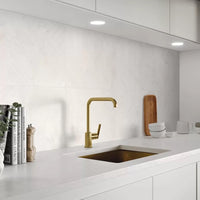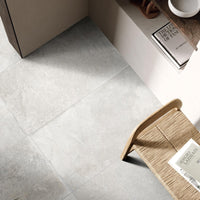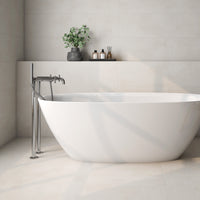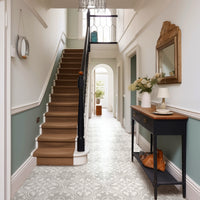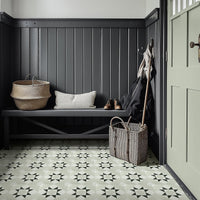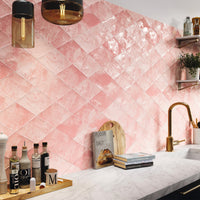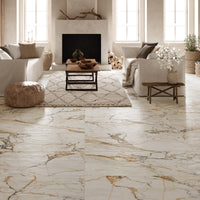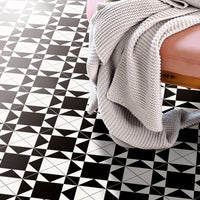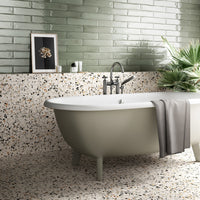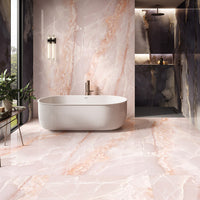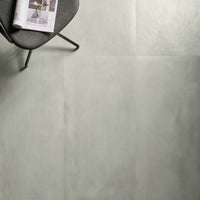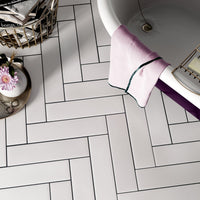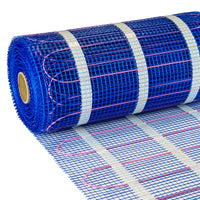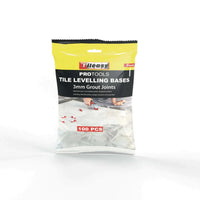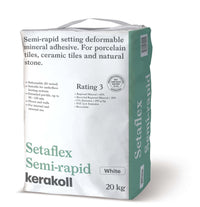When installing wood effect tiles, an important but often overlooked detail is choosing the right grout colour. This can greatly affect the appearance of your new floor, but it’s not always an easy decision and can often feel a little daunting. After all, you certainly don't want to make the wrong decision, especially if you're tiling a large open floor.

So to help you along the way, we’ve gathered some tips and advice on selecting the perfect grout colour for your wood effect tiles. With this guide, you can confidently make a choice that enhances the beauty of your new planks and suits your home's interior style.
Complimentary or Contrasting?
The first thing to consider is whether the grout should match or contrast against the colour of your tile.
-
Choosing a matching grout colour will help you achieve a seamless, continuous look - a great choice for modern kitchens and larger living areas. As there's less visual distraction, the focus is on the tiles themselves, allowing their grain and pattern to shine. For example, with light oak tiles, a beige grout will blend in beautifully and compliment the overall scheme.
-
If you prefer to highlight the layout pattern of your tiles, selecting a contrasting grout can be really effective. This approach draws attention to the shape and arrangement of the tiles, adding visual interest. A dark grout with lighter tiles will always work wonders, especially if you're laying wood tiles in a trendy herringbone pattern.
Consider Your Wood Tile Style
For wood effect tiles that fall on the rustic or traditional side, earthy toned grouts such as brown or warm grey can complement the cosy and inviting feel of your new space. For example, if you're tiling a farmhouse-style kitchen with distressed wood tiles, you might want to consider a tan-hued grout to accentuate the rustic charm of your floor.
On the other hand, if you're tiling a modern space using contemporary timber tiles, then neutral or cool-toned grout colours will help maintain a clean and sleek appearance. For example, in a stylish wetroom with grey wood tiles, a pale grey grout will keep the room feeling bright and airy, while offering subtle contrast.
Practical Considerations
Beyond aesthetics, there's a couple of practical aspects to consider when choosing your grout colour.
In areas with heavy foot traffic such as hallways or commercial spaces, darker grout colours will be more forgiving when it comes to dirt and stains. They tend to look cleaner for longer, reducing the need for frequent cleaning.
-
And in smaller rooms - like bathrooms and cloakrooms - opting for a medium or light grout tone can help make the room feel more open and spacious. They'll also reflect the light, helping to brighten things up.
Tips for Making the Final Decision
When you're ready to choose your grout colour, keep these tips in mind:
Test with samples. Before making a final decision, ask your tiler or builder if they have any grout sample swatches, so you can test a few different colours against your new tiles.
Consider the joint width. The width of your grout joint can also affect the overall look. Thinner grout lines tend to blend in more and give you a more modern finish, while wider lines can make the grout itself more prominent.
Seal the deal. Although today's high-quality grouts are designed to resist staining, they may fade or discolour over time - especially if you opt for a lighter grout over a busy floor. For this reason, we always always recommend sealing your grout joints, especially if you choose a cement-based grout. It's straight-forward, if a little tedious - but it'll help maintain the beauty of your new floor for years to come.
